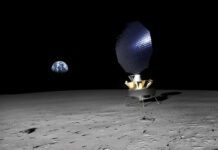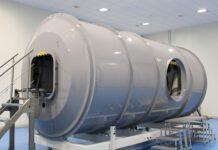
In April, ESA signed a letter of intent with the Swedish National Space Agency to send an ESA astronaut aboard an Axiom mission to the International Space Station. In June, the agency announced that Marcus Wandt, a member of ESA’s newly formed astronaut reserves, had been selected to fly aboard the mission. This meant that Wandt was to be the first of the newest class of ESA astronauts to secure a seat to space despite not being one of the five career astronauts selected.
When the deal was initially announced in April, ESA Direct General Josef Aschbacher explained that “the ESA astronaut policy was developed for exactly these opportunities, flying on commercial flights in partnership as we transition Europe’s access to space and diversify the space market.” But what is the ESA astronaut policy?
After an extensive search of the ESA website and a number of other sources, I came up empty-handed. So, I sent a request to the ESA media team to get a copy. That was on 30 June.
On 5 July, I received a response stating that “at the moment, the document cannot be shared externally.” I was also told that I would receive a more detailed reply from the ESA Astronaut Centre (EAC) in Cologne. I did not. So, I sent weekly reminders to a very patient and understanding ESA media team.
On August 29, I was finally given the contact details of the head of EAC, Frank de Winne. If the name sounds familiar, then you know you’re ESA astronaut history. De Winne was selected to be an ESA astronaut in October 1998, flew aboard two missions, and spent just under 199 days in space. He was also the first European commander of the ISS.
De Winner reiterated what the ESA media team had told me, stating, “ESA policy documents are documents for internal use with ESA and Member States and are not releasable to the public.” However, he did, however, share a few details. Firstly, he explained that the most recent iteration of the agency’s astronaut policy was adopted by member states in December 2020. He also summarized the content of the document that was relevant to the decision to select Wandt for the Axiom mission.
“We have established a career astronaut corps and a corps of astronaut reserve. In case a Member State of ESA wants to implement a national mission, they can call on ESA to do that on their behalf. ESA will then recruit the astronaut from the respective country from the astronaut reserve, and the individual will become an ESA project astronaut for the duration of the training, mission implementation, and post-flight activities. After that, the astronaut returns to his/her previous duties.”
The final element of the document that de Winner shared with European Spaceflight was a table of contents for the astronaut policy that gives an idea of its scope.
- Introduction
- Objectives of the policy
- The European Astronaut Corps
- Selection and Recruitment
- Flight Assignment
- Outreach and Ambassadorship
- Support to Commercialisation
- Nationally Sponsored Mission
- Conclusion
It’s not really what I was looking for when I set out on what was supposed to be a simple exercise. It’s also not what I would call a triumph for ESA’s stated vision for greater transparency. Although what I discovered was interesting, it has left me questioning what could possibly be in this document that would make it unsuitable for public consumption.







